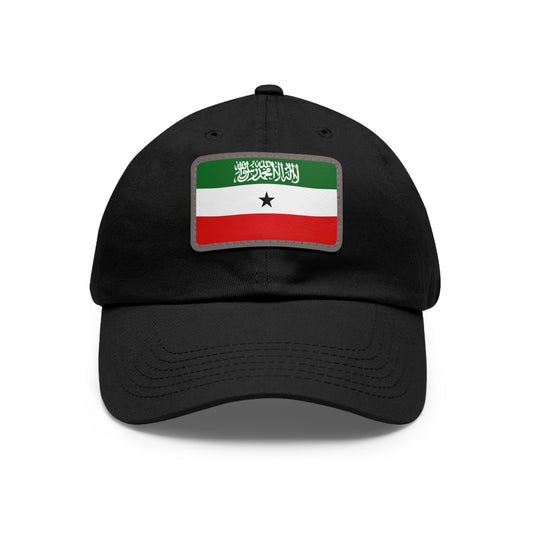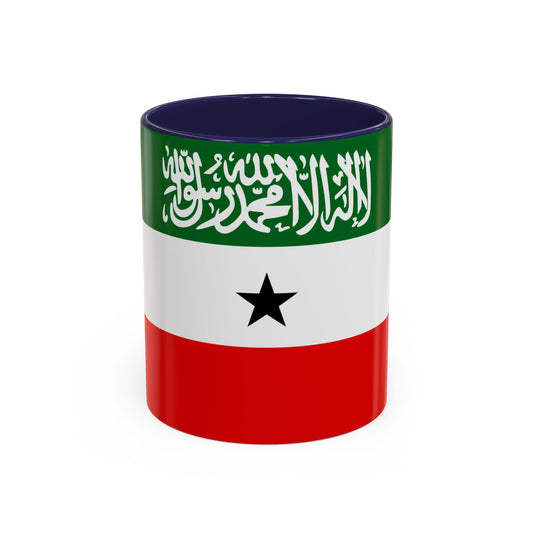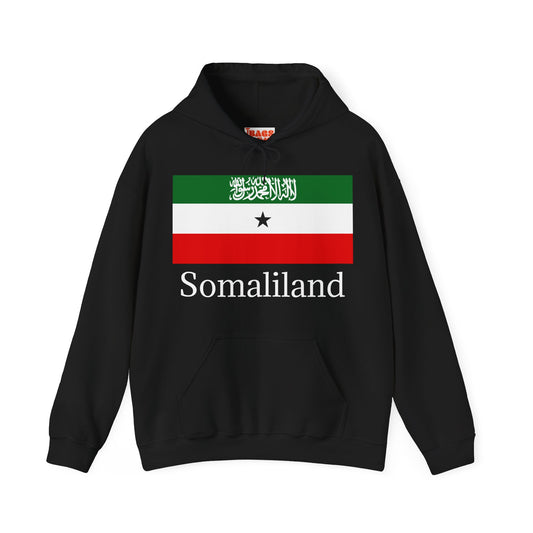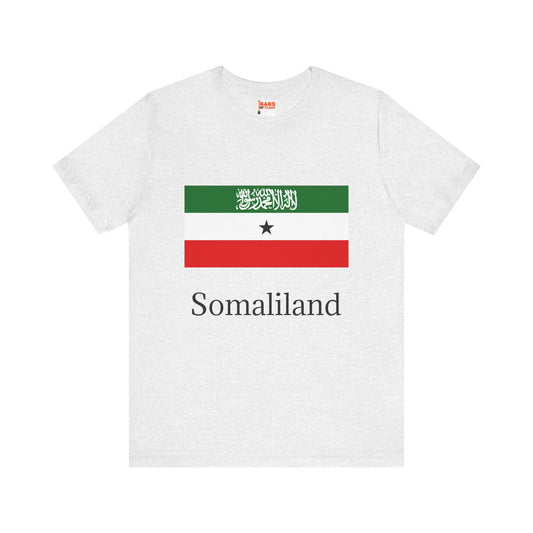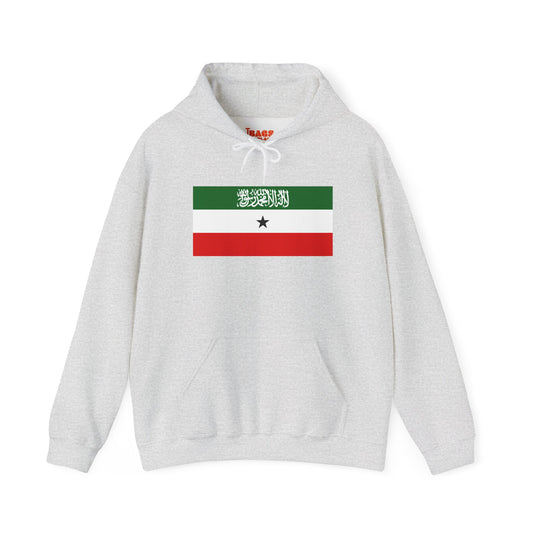-
Somaliland Sweatshirt
Regular price $34.15 USDRegular priceUnit price / per -
Somaliland Flag Sweatshirt
Regular price $34.15 USDRegular priceUnit price / per -
Somaliland Pillow
Regular price $22.65 USDRegular priceUnit price / per -
Somaliland Backpack
Regular price $59.79 USDRegular priceUnit price / per -
Somaliland Leather Patch Hat
Regular price $18.85 USDRegular priceUnit price / per -
Somaliland Mug
Regular price $11.65 USDRegular priceUnit price / per -
Somaliland Trucker Cap
Regular price $14.90 USDRegular priceUnit price / per -
Somaliland Hoodies
Regular price $34.40 USDRegular priceUnit price / per -
Somaliland T-shirts
Regular price $22.79 USDRegular priceUnit price / per -
Somaliland Flag Hoodies
Regular price $34.40 USDRegular priceUnit price / per -
Somaliland Flag on T-shirt
Regular price $22.79 USDRegular priceUnit price / per
Collection: Somaliland
The Somaliland flag is a significant symbol of the self-declared state of Somaliland, located in the Horn of Africa. This flag represents the aspirations, history, and identity of the people of Somaliland. We will delve into the history, symbolism, and usage of the Somaliland flag.
Overview of the Somaliland Flag Design and Colors

The flag of Somaliland features a striking tri-color scheme with three horizontal bands, each conveying a unique aspect of the nation's identity and aspirations. The vibrant green top stripe is symbolic of the country's lush landscapes and its emphasis on agriculture, reflecting both the natural wealth and the environmental hopes of Somaliland. Directly beneath, a pristine white stripe cuts across the center, symbolizing the peace and unity that bind the region's diverse communities together. The final stripe, a deep red, lies at the base of the flag, serving as a poignant reminder of the sacrifices made during the struggle for independence. These colors not only define the visual identity of Somaliland but also encapsulate the core values and the collective spirit of its people.
Historical Context of the Somaliland Flag
The inception of the Somaliland flag in 1996 was a profound declaration of the region's desire for sovereignty following its unilateral declaration of independence from Somalia five years earlier in 1991. This period was marked by a genuine desire among the people of Somaliland to establish a distinct national identity separate from Somalia, a sentiment deeply embedded in the fabric of the flag's design and colors. The choice of the flag's colors and the adoption date are imbued with the historical struggles and aspirations of the people of Somaliland.
Before adopting its flag, Somaliland was part of the Somali Democratic Republic, under a flag that did not represent the distinct identity and heritage of the Somaliland people. The region has a storied history, having been a British protectorate before uniting with Italian Somaliland to form Somalia in 1960. The dissolution of this union and the subsequent quest for international recognition have been central themes in Somaliland's recent history.
The adoption process of the flag was also a pivotal moment in asserting the region's autonomy and distinctiveness on a global stage despite the lack of official international recognition. The flag is a testament to Somaliland's enduring quest for sovereignty and the resilience of its people, encapsulating both the pride of past achievements and the hope for a recognized future.
Symbolism Behind the Somaliland Flag
The Somaliland flag is rich with symbolism, and each element is carefully chosen to reflect the essence and aspirations of the nation. The green stripe atop the flag is a nod to Somaliland's agriculture, a cornerstone of its economy, and a symbol of growth and prosperity. It speaks to the nation's hope for a flourishing future. The central white stripe stands for peace and unity, essential values for Somaliland, which has seen its share of strife and aims for harmony among its diverse communities. This stripe acts as a literal and figurative bridge between the past and the future. Below, the red stripe is a vivid reminder of the bloodshed and sacrifice in pursuing independence, honoring those who fought for the nation's sovereignty.
At the flag's hoist side, a black star is set against the white stripe, symbolizing the unity of the Somaliland people. It is a guiding light towards freedom and equality, echoing the country's struggle for recognition. Each element of the flag’s design, from the colors to the star, intertwines to tell the story of Somaliland’s past, present, and hopeful future, making it a powerful emblem of national identity and pride.
Current Relevance of the Somaliland Flag
Today, the Somaliland flag remains a potent symbol within the region, frequently showcased at many significant national occasions, including Independence Day celebrations, and pivotal in military and state ceremonies. Its presence extends beyond physical borders, featuring in diplomatic meetings where Somaliland representatives aim to bolster the territory's profile and advocate for international recognition. Within the local communities, the flag is a source of immense pride, symbolizing the collective identity and unity of the Somaliland people. Despite its contested status internationally, the flag has not waned in its importance at home; instead, it has grown to embody the resilience and determination of a nation seeking acknowledgment on the global stage. The flag's visibility in such contexts underlines its role not just as a national emblem but as a banner under which the people of Somaliland rally for their rights, sovereignty, and the dream of eventual recognition.
Additional Facts and Protocols Related to the Somaliland Flag
The flag of Somaliland is governed by a set of protocols that underscore its importance and reverence in the society. One of the key rules regarding its display is that the flag must never come into contact with the ground, a sign of respect and honor for the nation it represents. Additionally, flying the flag at half-mast is reserved exclusively for periods of national mourning, which the Somaliland government officially declares. These regulations serve to maintain the dignity and solemnity associated with the flag.
An intriguing aspect of the Somaliland flag is its origin story. The flag was the winning entry in a competition held to determine its design, a contest that Mohammed Awale Liban won. Liban’s creation was chosen for its symbolic representation and meaningful colors that articulate the nation's values, aspirations, and the sacrifices of its people. This backstory adds a layer of personal connection between the flag and the citizens of Somaliland, reinforcing its status as a powerful symbol of national pride.
In addition to these facts, it is noteworthy that the flag is not only a symbol used within the borders of Somaliland but also acts as an emblem in international settings where Somaliland seeks to assert its identity and push for recognition. The flag’s presence in such contexts highlights its role in representing the hopes and aspirations of the Somaliland people on a global stage.










